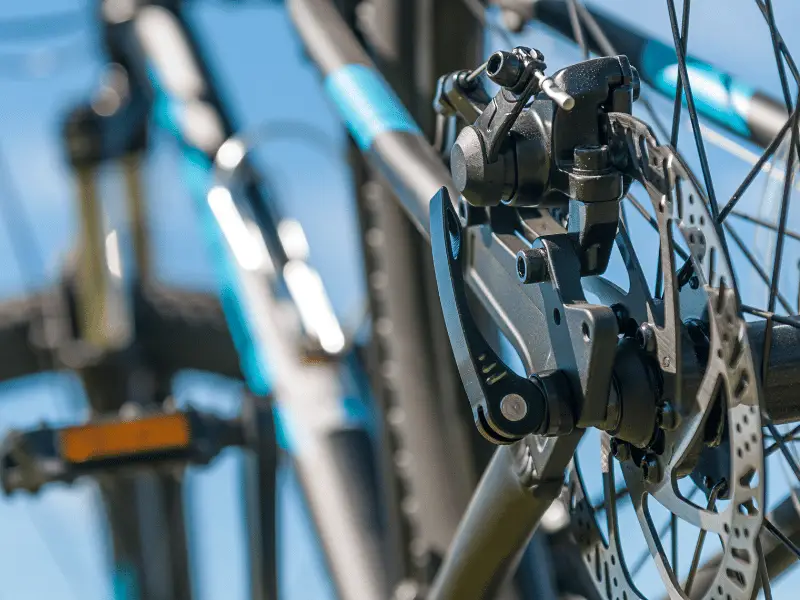
If you’re a cyclist who is looking to upgrade or replace their brakes, you may be wondering if you can use Shimano brakes with Magura calipers. While both brands are popular among cyclists, they have different specifications that can make it difficult to mix and match their components.
According to several online sources, it is possible to use Magura calipers with Shimano levers, and vice versa. However, it’s important to note that there may be some compatibility issues that you’ll need to address before you can use these components together. For example, Shimano rotors are thinner than Magura rotors, which may affect the performance of your brakes.
In this article, we’ll take a closer look at the question of whether you can use Shimano brakes with Magura calipers. We’ll explore the compatibility issues you may encounter, and provide some tips on how to ensure that your brakes are working at their best. Whether you’re a beginner or an experienced cyclist, this article will help you make an informed decision about your brake setup.
Shimano Brakes and Magura Calipers Compatibility
Shimano Brakes Overview
Shimano is a well-known brand in the cycling industry, especially when it comes to brakes. They offer a wide range of options for different types of bikes and riding styles. Shimano brakes are known for their reliability, effectiveness, and ease of maintenance. They use mineral oil as the hydraulic fluid, which is different from other brands such as SRAM that use DOT fluid.
Magura Calipers Overview
Magura is another popular brand in the cycling industry, particularly for their hydraulic disc brakes. They offer high-performance brakes that are known for their stopping power, modulation, and durability. Magura calipers use mineral oil as the hydraulic fluid, just like Shimano.
Compatibility Factors
One of the most common questions regarding Shimano brakes and Magura calipers is whether they are compatible with each other. The short answer is that it depends on the specific components being used.
Shimano and Magura use the same type of hydraulic fluid, so that is not an issue. However, there are other factors that come into play such as the hose diameter, banjo angle, and mounting standards. For example, Shimano uses a different banjo angle than Magura, which means that a Shimano lever may not fit properly with a Magura caliper without an adapter.
It is possible to mix and match Shimano brakes with Magura calipers, but it is important to do so carefully and with the right components. It is recommended to consult with a professional mechanic or to do thorough research before attempting to combine different brands.
Installation Process
Tools Required
Before you begin the installation process, make sure you have the following tools:
- Hex wrenches
- Torque wrench
- Post mount adapter (if necessary)
- Shimano rotor (if necessary)
Installation Steps
Follow these steps to install Shimano brakes with Magura calipers:
- Remove the old brake pads and rotor from the Magura caliper.
- If switching to a larger rotor size, install the +20 IS to Post Mount adapter onto the frame or fork.
- Attach the Shimano rotor to the wheel hub.
- Attach the Shimano brake caliper to the adapter or frame/fork. Use a torque wrench to tighten the bolts to the manufacturer’s recommended torque specification.
- Insert the new brake pads into the Shimano caliper.
- Adjust the brake lever reach and bite point to your preference.
- Test the brakes to ensure they are functioning properly.
Note that the installation process may vary slightly depending on your specific bike and components. Always refer to the manufacturer’s instructions and consult a professional mechanic if you are unsure about any steps.
Testing and Maintenance
Initial Testing
Before you take your bike out on a ride, it’s important to test the Shimano-Magura brake setup to ensure it’s working properly. Start by testing the brake lever for proper resistance and smoothness. Next, check the brake pads and calipers for any visible damage or wear.
If everything looks good, test the brakes by squeezing the levers and observing the response of the calipers. Make sure the brakes engage smoothly and provide adequate stopping power. If there are any issues, consult a professional bike mechanic for further assistance.
Maintenance Tips
Maintaining your Shimano-Magura brake setup is important to ensure optimal performance and longevity. Here are a few tips to keep in mind:
- Regularly inspect brake pads and calipers for wear and damage.
- Keep the brake system clean and free of debris.
- Check brake fluid levels and replace as needed.
- Make sure all bolts and connections are properly tightened.
- Periodically bleed the brake system to remove any air bubbles and maintain proper fluid pressure.
Following these maintenance tips will help ensure that your Shimano-Magura brake setup continues to provide reliable and consistent braking performance.
Final Thoughts
After researching and analyzing the available information, it is clear that using Shimano brakes with Magura calipers is possible but not recommended. There are several factors to consider, including the thickness of the rotors and the compatibility of the brake levers and calipers.
Shimano rotors are thinner than Magura rotors, which can cause issues with heat dissipation and brake performance. While some riders have combined Shimano rotors with Magura calipers, it is not recommended by either manufacturer and may void any warranties.
On the other hand, Shimano-Magura hybrid brakes, also known as “Shigura” brakes, have been used by some riders with success. These brakes combine Shimano brake levers with Magura calipers, allowing for greater customization and compatibility.
Ultimately, the decision to use Shimano brakes with Magura calipers should be based on individual preferences and needs. It is important to consider the potential risks and benefits and to consult with a professional mechanic or manufacturer before making any modifications to your bike’s braking system.
